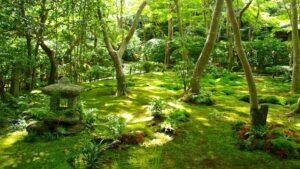Hiraizumi: A Prosperous City of the Oshu Fujiwara Clan that Lasted 100 Years
The cedar-lined Tsukimizaka (Moon Viewing) slope of Chuson-ji Temple in a solemn mountain atmosphere brings you to the Konjikido Golden Hall, which retains its appearance of those days. Stepping into it, you may feel Fujiwara Kiyohira’s aspiration to build a Buddhist Land (an ideal peaceful nation on the Buddha’s teaching) from the entire structure. It is covered with gold leaves inside and outside fully with inlaid butterflies, peacocks, and Buddhist floral patterns in mother-of-pearl inlay using luminous shells and lapis lazuli. In 2024, Chuson-ji marks the 900th Anniversary of Its Construction.
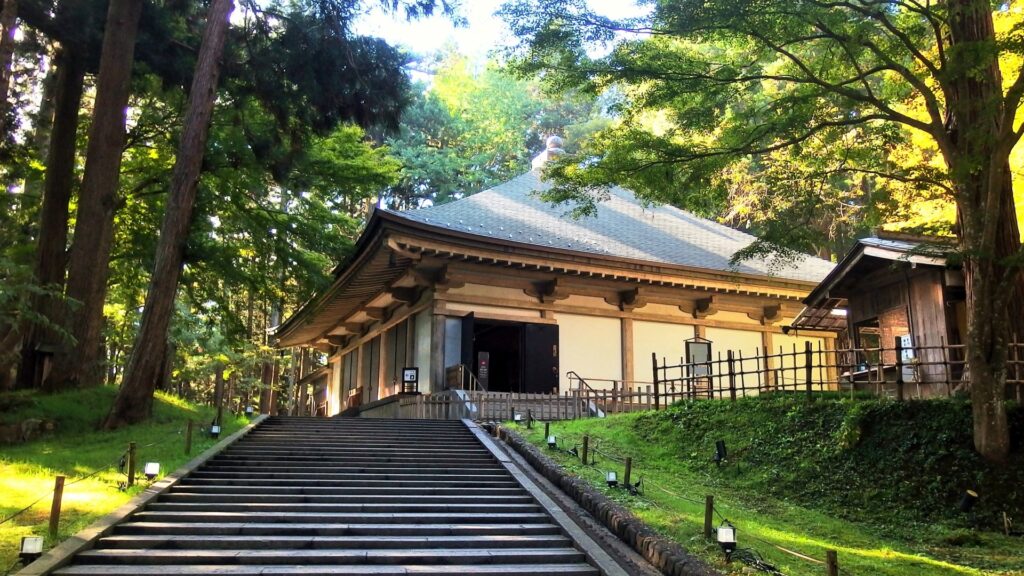

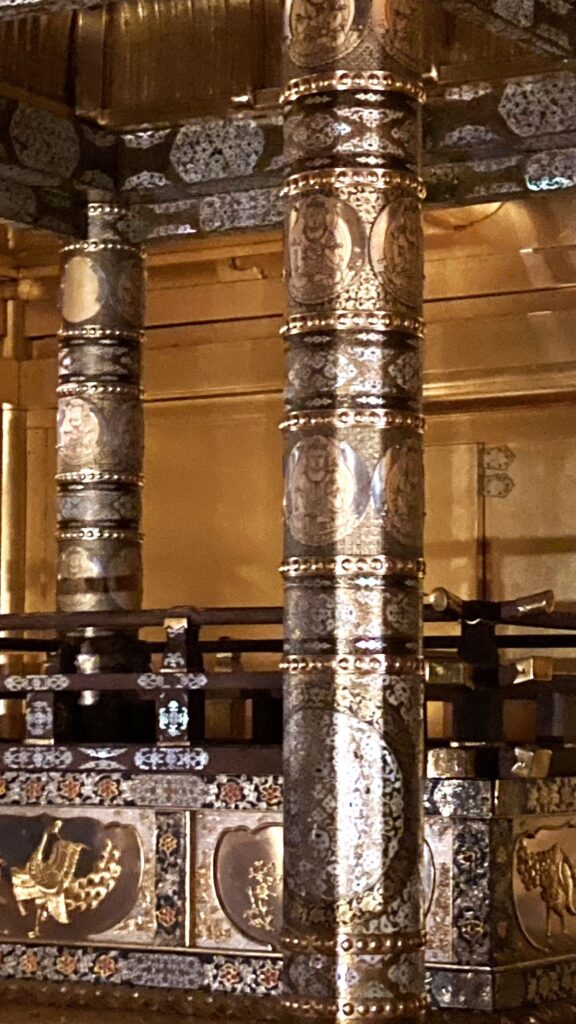
Kiyohira’s Aspiration for A Peaceful Oshu
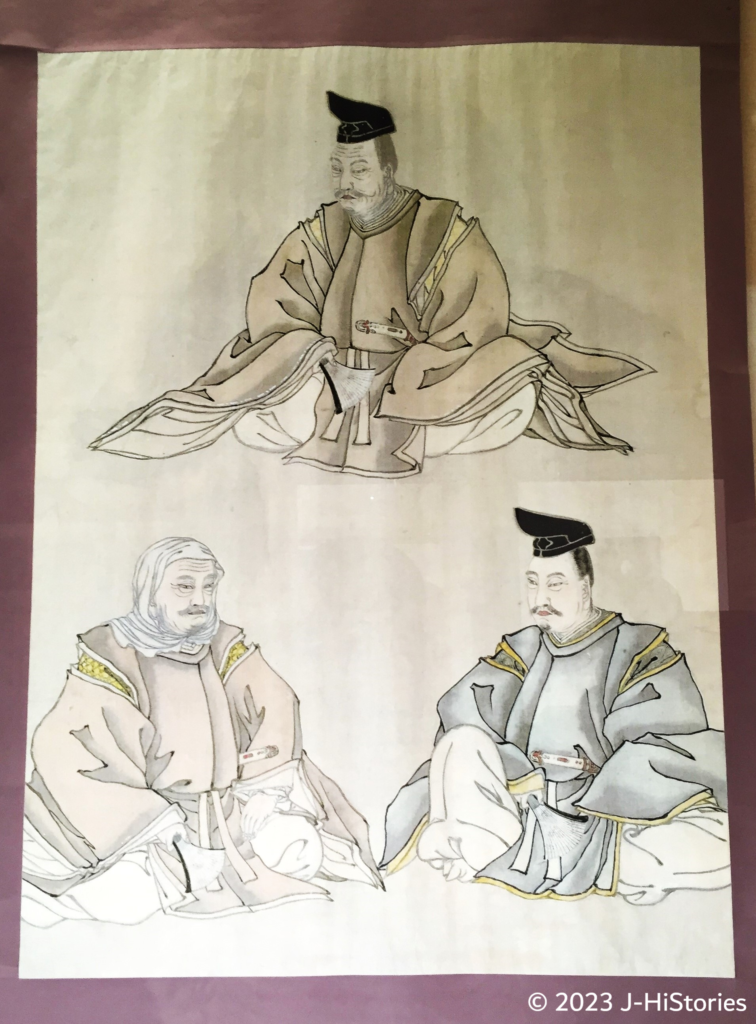
(L) Hidehira and (R) Motohira
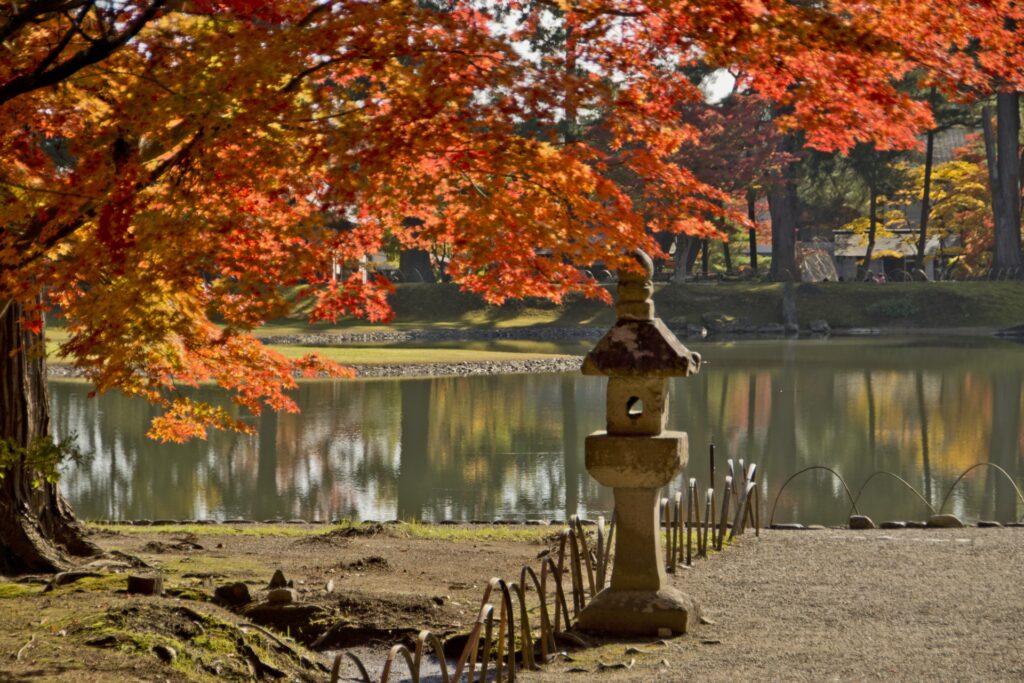
Fujiwara Kiyohira (1056~1128, 藤原清衡), established and brought peace and prosperity to the Oshu province in the Tohoku region, whose administrative central city was Hiraizumi. Kiyohira began the construction of the Chuson-ji Temple (中尊寺) when he was over 60 years old after decades of warfare had finally ended and peace had prevailed. He proclaimed proudly being the first leader of the Oshu and prayed for all people and creatures who died in successive battles reborn in the Buddhist Pure Land. His will was passed on to the following generations, Motohira (1105~1157, 基衡), Hidehira (1122~1187, 秀衡), and Yasuhira (1155~1189, 泰衡). Motohira and Hidehira built the Motsu-ji temple located about 1 km northeast of Chuson-ji to prominence with 40 halls and stupas, and 500 monks’ quarters. One sub-temple of Motsu-ji, Muryoko-in, was built by Hidehira, and modeled on the Phoenix Hall known as Hou-ou-do of Byodoin Temple in Kyoto. Muryoko means the infinite brightness to bring about permanent grace illuminated by Amitabha Buddha. The centerline of the Muryoko-in building passed through the top of Mt.Kinkei in the rear, and the sun sets over its edge biannually in spring and autumn. As people watched the sunset, they may have thought of the Pure Land of Ultimate Bliss.
Kiyohira Lost His Father, Wife, and Children In A Decade of Warfare and Bone Fights

The first half of Kiyohira's life unfolded as a series of relentless battles. In the Oshu province, an ethnic group known as "Emishi" had steadfastly resisted the Imperial Court since the Nara period (710-794). After around 200 years of residence, the Emishi came under Imperial control and were newly called "Fushu." However, in the mid-11th century, the formidable Abe clan, the most powerful Fushu, rose in rebellion against the Imperial Court.
Concerned about the escalating power of the Abe clan, the Imperial Court responded by dispatching an expeditionary army led by the Minamoto clan. Kiyohira’s father allied with the Abe army, given that his wife was the daughter of the head of the Abe clan. The battles grew increasingly chaotic, prompting the Imperial army, to seek assistance from another influential Fushu faction - the Kiyohara clan. This intervention marked a pivotal moment, turning the tide of the war. The Abe clan was defeated, and Kiyohira's father met a tragic end, losing his life to a blunt sword at Kuriyagawa.
The nine-year conquest of the Abe clan concluded when Kiyohira was merely seven years old. Subsequently, Kiyohira and his mother found themselves compelled to align with their former enemies, the Kiyohara family, where he was raised. As time progressed, Kiyohira became embroiled in a succession dispute within the Kiyohara clan, spanning over four years. Throughout this tumultuous period, his wife and children fell victim to the conflicts, yet Kiyohira alone emerged as a survivor amidst the protracted battles.
The Birth of Oshu Fujiwara Clan by Kiyohira, A Man of Lineage of Both Fushu and Noble
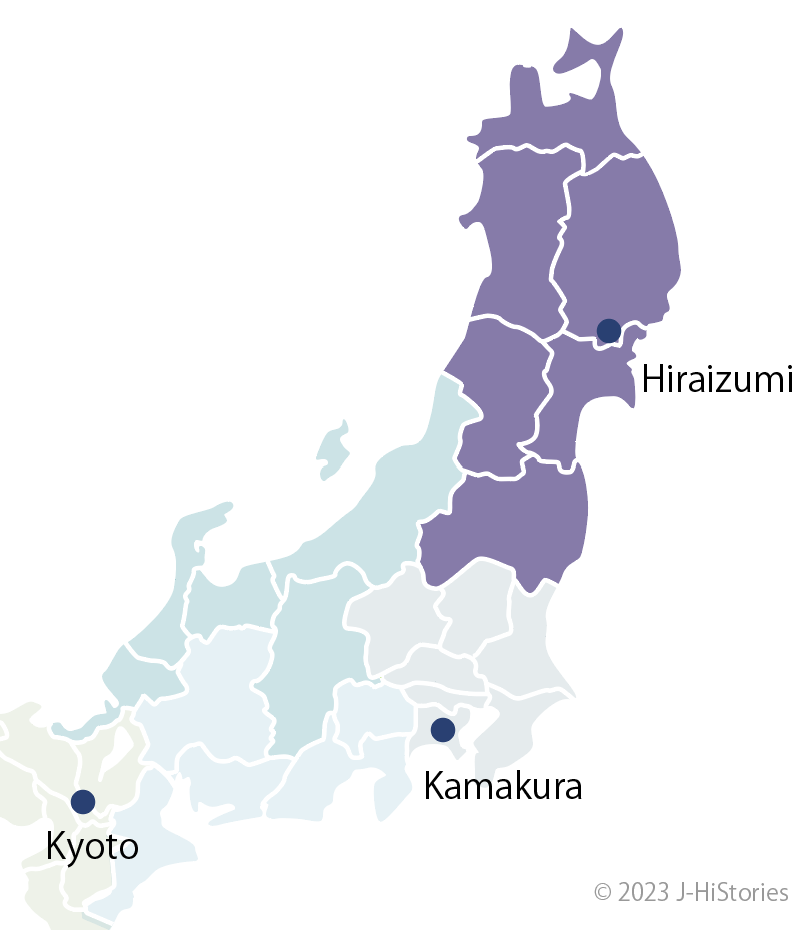
In 1087 at the age of 32, Kiyohira assumed the role of the first leader of the unified Oshu. Subsequently, he embarked on the establishment of the central city in Hiraizumi, laying the foundation with the construction of the Chuson-ji Temple. He fully expressed his fervent wish aspiration in his Ganmon, a written prayer, to enshrine the spirits of all living creatures, friends and foes alike, who lost their lives in the prolonged conflicts and to guide them to the Buddhist Pure Land. Continuing his spiritual commitment, Kiyohira extended his prayers for the enduring well-being of all individuals, encompassing not only those from the Imperial Family but also ordinary citizens. This dedication stemmed from his awareness of being a descendant of the Abe clan, the former leader of the Emishi, the group defeated by the Imperial Court. Additionally, he acknowledged his lineage from the Fujiwara clan, a court noble family. With this profound connection to his ancestry, Kiyohira proudly declared himself as the inaugural lord of the Oshu Fujiwara clan, affirming his commitment to a unified Oshu.
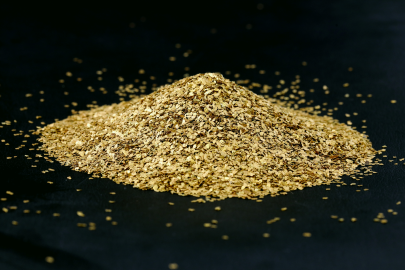
(@Michinoku Gold)
Hiraizumi flourished with a population of around 100,000, with houses lining the streets and a sophisticated culture. This prosperity was fuelled by gold dust, high-quality horses, and trade with East Asian countries.
The Sudden and Unexpected Demise of the Oshu Fujiwara Clan
The prosperity of the Oshu Fujiwara clan created by Kiyohira in Hiraizumi was suddenly threatened with destruction about 100 years later, at the end of the Heian period. The clan came to an end in 1189 defeated by a powerful lord, Minamoto Yoritomo (1147-1199, 源頼朝), who established the first Samurai government in Kamakura. It all began when Minamoto Yoshitsune (1159-1189, 源義経) fled to Hiraizum to escape from his brother Yoritomo's tracking down. Despite the 3rd lord, Hidehira's last word, "Protect Yoshitsune", the 4th lord, Yasuhira succumbed to Yoritomo's power and forced Yoshitsune to commit suicide. It seemed like the end of the story, but Yoritomo's pressure on the Oshu Fujiwara clan did not ease. Not only did he want the gold and fine horses produced in Oshu, but also, he also marched to Kuriyagawa, north of Hiraizumi where his ancestor, the Minamoto clan destroyed the Abe clan and Kiyohira's father. He demonstrated the same scenario as his ancestor, who had been appointed Governor of the Oshu province by the Imperial Court, and expressed that he was the Shogun to conquer and control the Oshu province. Yasuhira was killed because of Yoritomo's long-desired objective to control eastern Japan from Kamakura and Oshu even though he had not committed treason. Yasuhira's head was hung on a pillar in the same manner as Kiyohira's father when he was defeated by Yoritomo's ancestor, the Minamoto clan. Therefore, only his head is now housed in Konjikido Hall. Here, the Fujiwara clan disappeared.
A Poet Basho Expressed Oshu Fujiwara’s Aspirations and Sorrow
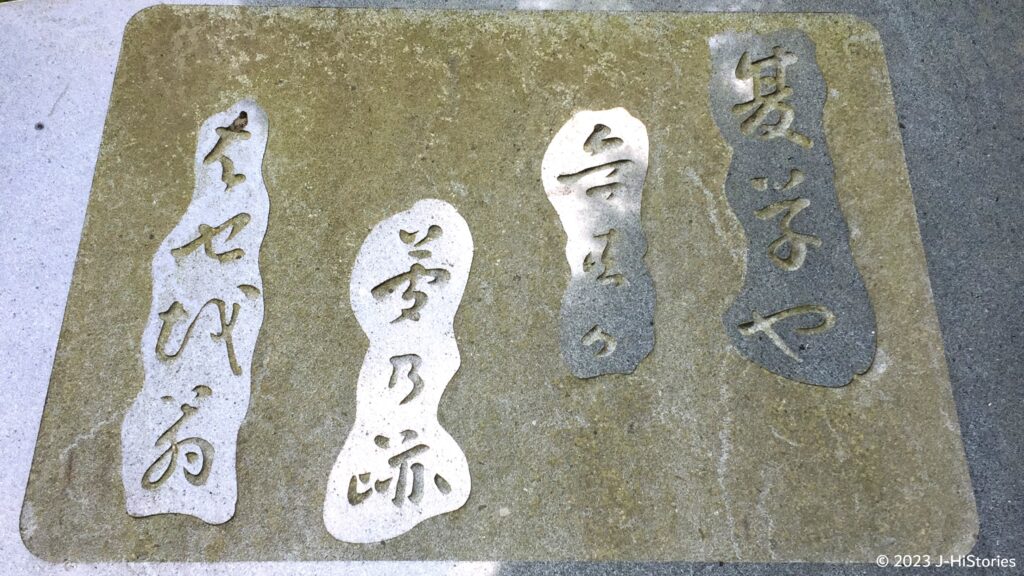
夏草や兵どもが夢の跡
Koyohira's gold coffin lies beneath the Buddhist statues and his body is interred with two bodies of Motohira and Hidehira and one head of Yasuhira quietly and peacefully at the Konjikido Golden Hall of Chuson-ji Temple. Please enjoy walking at Hiraizumi to feel Oshu Fujiwara’s prosperity and the end with one famous poem created by a famous Haiku poet, Basho (1644- 1694, 松尾芭蕉);
“The summer grass, it is all that’s left of ancient warriors' dreams”, implying that Oshu Fujiwara’s fugacious 100 years of prosperity disappeared without a trace.
Oshu Fujiwara Timeline
| 1052 | "Age of the Final Dharma" was believed to begin in 1052 | - | Heian |
| 1056 | Kiyohira was born. His mother was the daughter of the Abe clan's head. | Age=1 | |
| 1062 | Abe clan was defeated by the Imperial Army and Kiyohira's father lost his life to a blunt sword at Kuriyagawa. The Imperial Army's head was Minamoto clan | 7 | |
| 1086 | Kiyohira's wife and children were killed during the battle in Kiyohara clan | 31 | |
| 1095 | Kiyohira moved to Hiraizumi | 40 | |
| 1105 | Kiyohira started the constraction of Chuson-ji & Motohira was born | 50 | |
| 1147 | Minamoto Yoritomo was born | - | |
| 1122 | Kiyohira's son, Hidehiwa, was born | 67 | |
| 1124 | Golden Hall of Chuson-ji was built | 69 | |
| 1128 | Kiyohira passed away | 73 | |
| 1156 | Hogen war, Kiyomori supported Emperor Go-Shirakawa | - | |
| 1157 | Morohira passed away | - | |
| 1159 | Yositsune was born | - | |
| 1159 | Heiji war, Kiyomori defeated Yoritomo's father | - | |
| 1160 | Yoritomo was exiled to Izu | - | |
| 1169 | Yoshitsune was placed in the care of the monks of Kurama temple | - | |
| 1174 | Yositune left Kuramadera Temple and moved to Hiraizumi | - | |
| 1180 | Minamoto Yoritomo raised an army to attack Kiyomori and his family | - | |
| 1180 | Yoshitsune left Hiraizumi to join his brother, Yoritomo's forces, | - | |
| 1183 | Kiyomori's family escaped from Kyoto attacked by Minamoto forces | - | |
| 1185 | Kiyomori's family fell at the Dannoura War | - | |
| 1185 | Goshirakawa appointed Yoritomo as the military and police power and approved as the ruler of eastern Japan | - | |
| 1185 | Minamoto Yoritomo established Kamakura Shogunate | - | Kamakura |
| 1187 | Yoshitsune escaped from Yoritomo's forces to Hiraizumi relying on Oshu Fujiwara Hidehira | - | |
| 1187 | Hidehira dies of illness | - | |
| 1189 | Yasuhira succumbed to Yoritomo's power and forced Yoshitsune to commit suicide | - | |
| 1189 | Yoshitsune died | - | |
| 1189 | Yoritomo defeated Yasuhira. Oshu Fujiwara clan ended | - | |
| 1192 | Minamoto Yoritomo became Shogun of Kamakura Shogunate | - |
Recommendations to visit
- Access: 2 hours Tohoku Shinkansen from Tokyo to Ichinoseki Station, then transfer to JR Tohoku Main Lince bound for Morioka. 7 minutes to Hiraizumi Station. A 5-minute Iwatekotsu Bus to Chuson-ji (中尊寺) Bus Stop.


